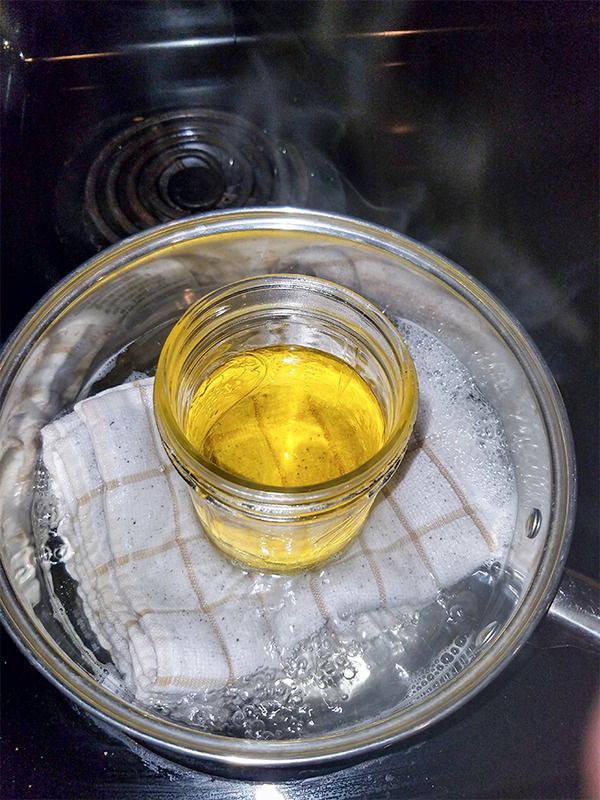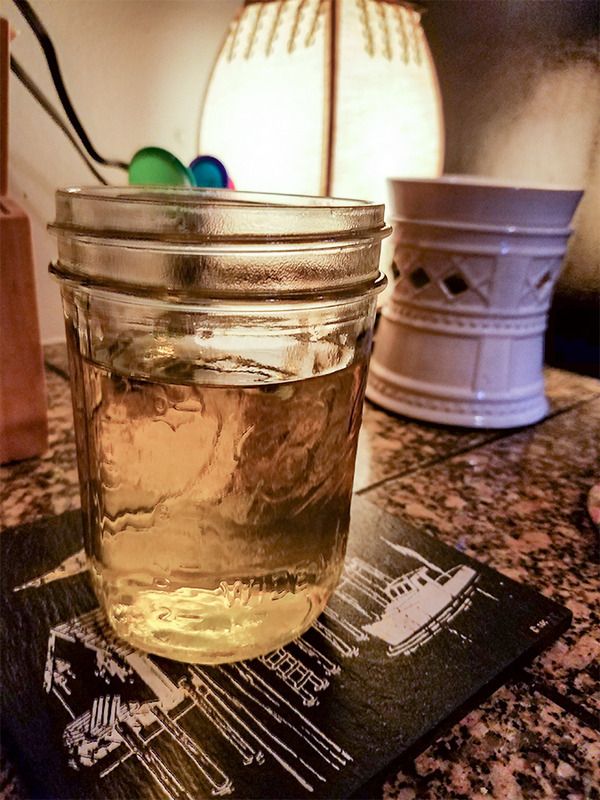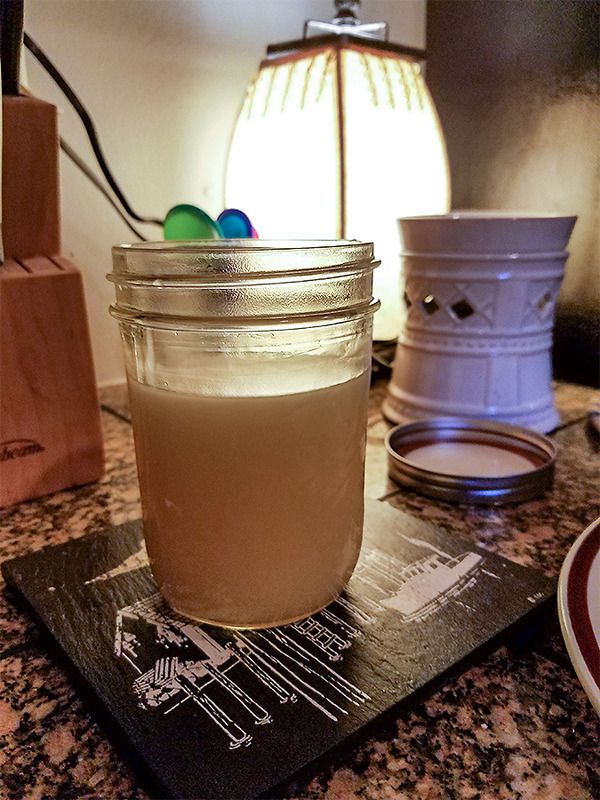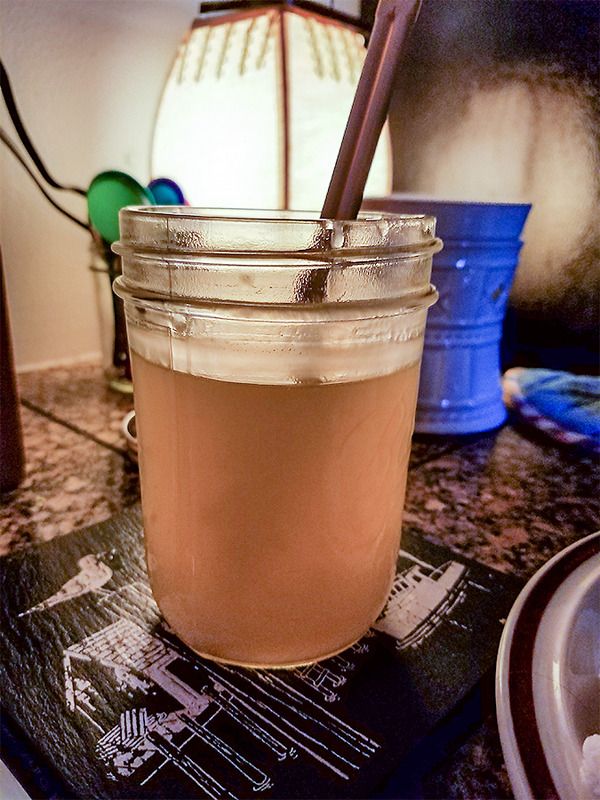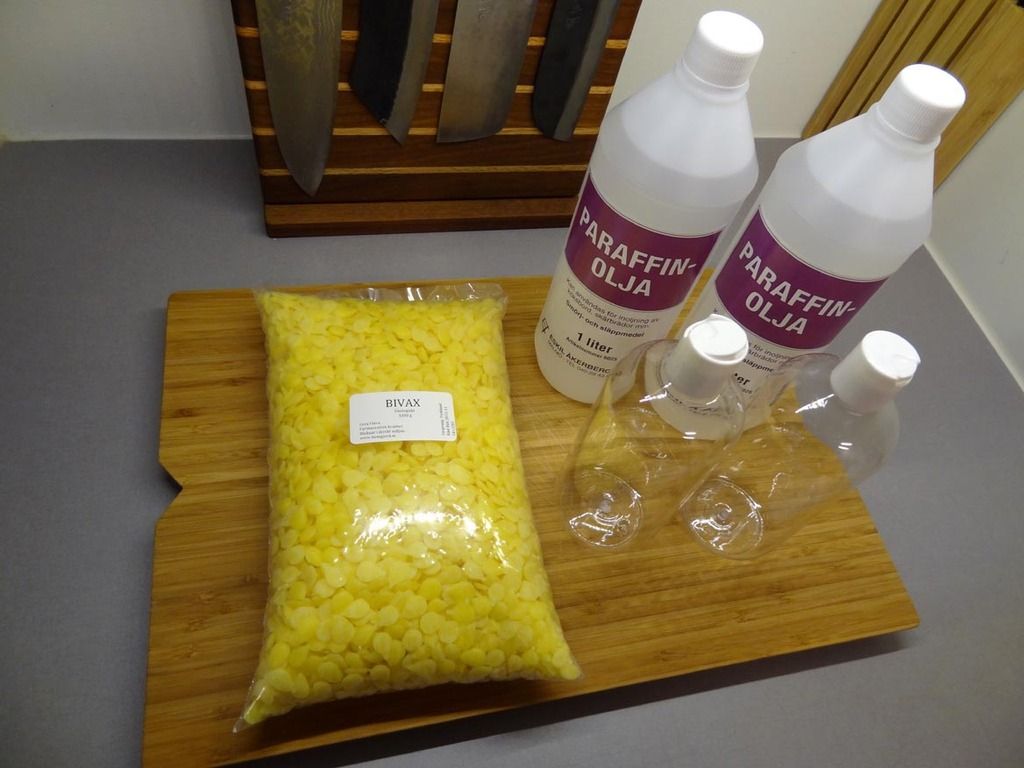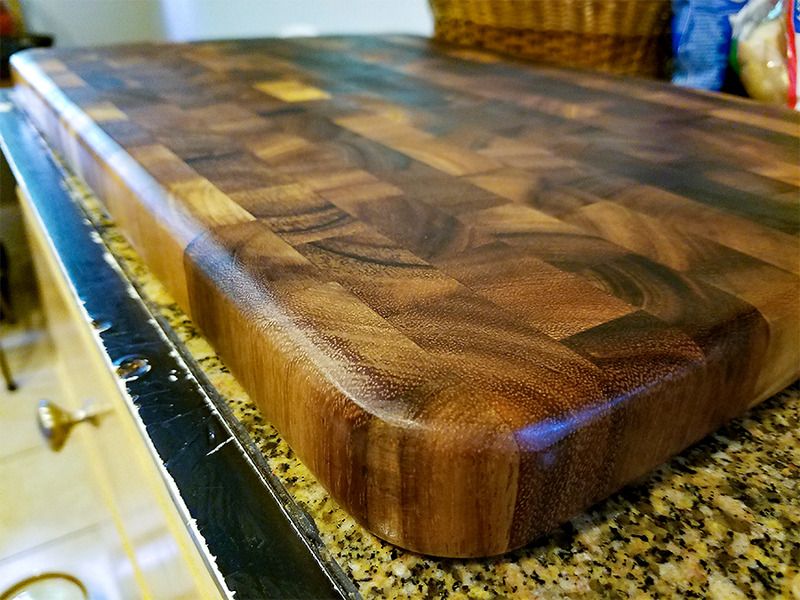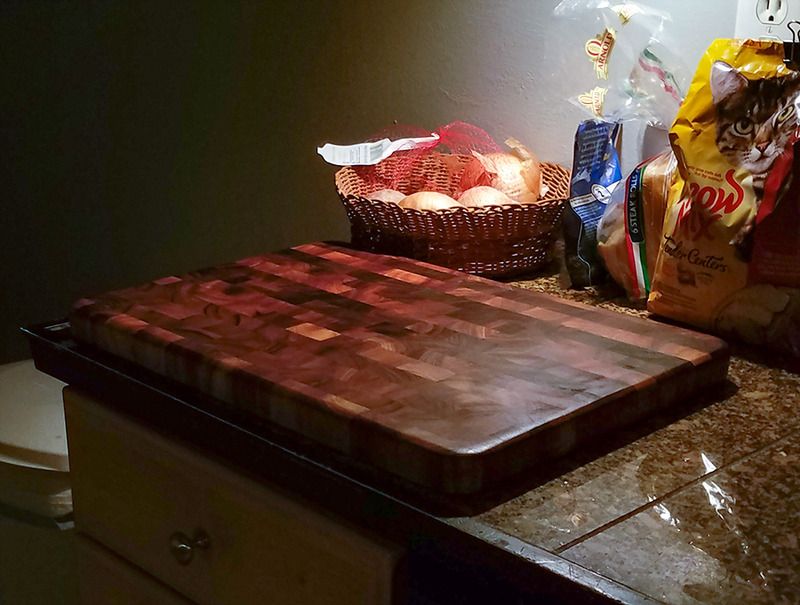I recently got a new acacia end grain cutting board. I am conditioning it with mineral oil and also some homemade board cream. But I have a question about the board cream that I made today. It's still a bit fluid, if I pick up the jar and tilt it, it will run. I was under the impression that it should be more solid, like butter or mayonnaise. I used 2oz of beeswax, and 8oz of mineral oil, heated in a pint mason jar on a towel in a sauce pan half full of water. The wax melted into the oil, turning it yellow, then I removed the jar from the sauce pan and let it cool, stirring occasionally.
Is my board cream too thin if it runs when I tilt the jar? Should I reheat the jar and add another 1oz stick of beeswax to thicken it up before using it on my new cutting board?
Thanks for any help.
Cheers,
chuck_d
PS - Been lurking only a few days reading the patina photos thread. This is my first post and I hope it's in the correct forum, mods please move if incorrect, thanks.
Is my board cream too thin if it runs when I tilt the jar? Should I reheat the jar and add another 1oz stick of beeswax to thicken it up before using it on my new cutting board?
Thanks for any help.
Cheers,
chuck_d
PS - Been lurking only a few days reading the patina photos thread. This is my first post and I hope it's in the correct forum, mods please move if incorrect, thanks.





